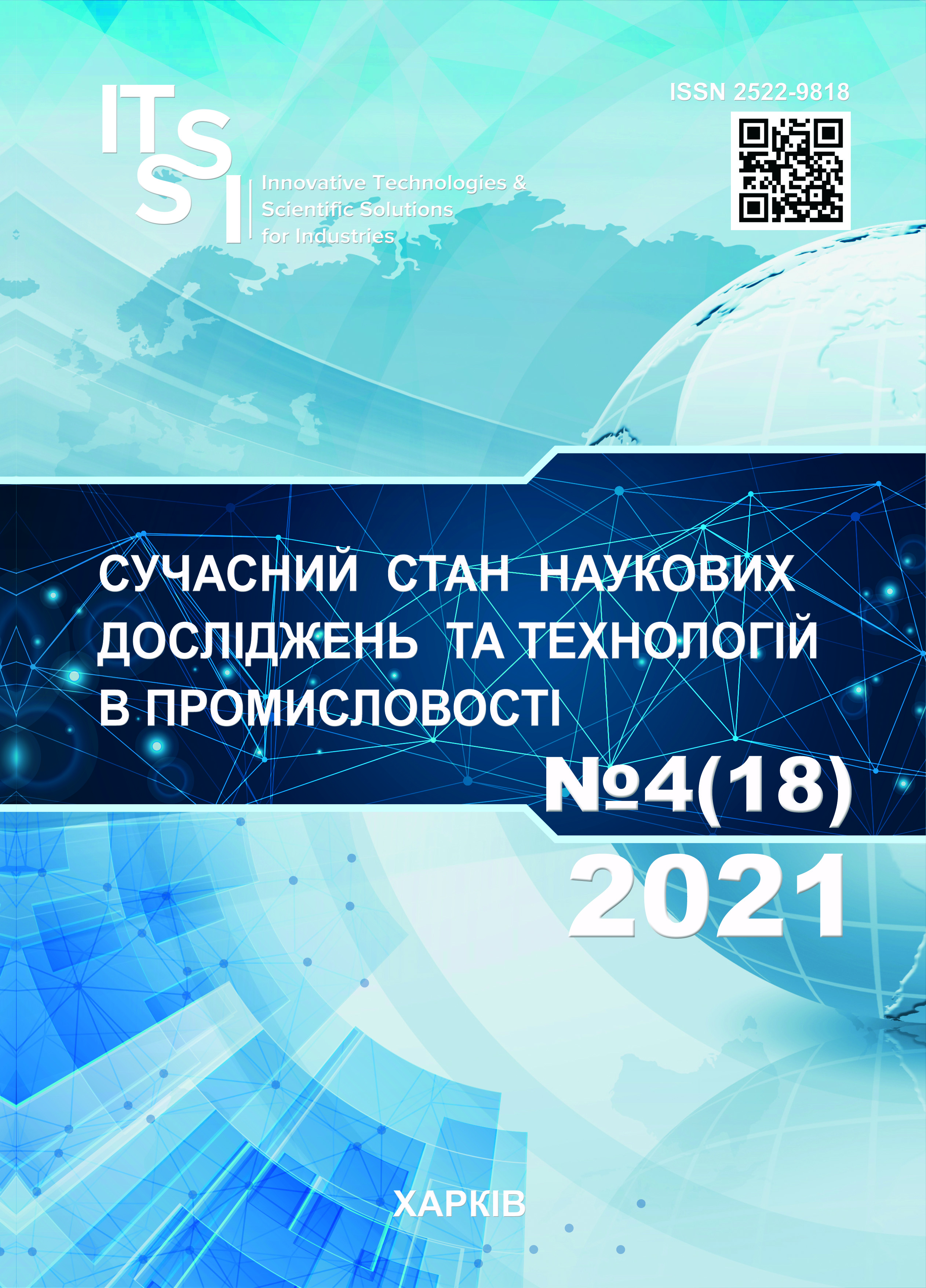HARDWARE SUPPORT PROCEDURES FOR ASYMMETRIC AUTHENTICATION OF THE INTERNET OF THINGS
DOI:
https://doi.org/10.30837/ITSSI.2021.18.031Keywords:
Internet of Things, asymmetric authentication, encryption algorithms, cryptographic keys, electronic certificates, digital signatures, cryptographic chipsAbstract
Subject of research: procedures of asymmetric authentication of Internet of Things nodes to ensure the highest level of security using cryptographic chips. The aim of the article is to study the ways of potential use of cryptographic chips to ensure secure authentication of Internet of Things sites using asymmetric cryptography procedures. The article solves the following tasks: analysis of hardware support technologies for asymmetric cryptography of the Internet of Things; definition of secure procedures for asymmetric authentication of Internet of Things sites and their constituent elements: creation of certificates, verification of public and private keys. Research methods: method of structural and functional analysis and design of complex systems, methods of identification and authentication of information objects, cryptographic methods of information protection, methods of security analysis of distributed information systems. The novelty of the study is the analysis of hardware support technologies for asymmetric cryptography of Internet of Things with cryptographic chips and the definition of structural and functional schemes for the implementation of procedures for asymmetric authentication of Internet of Things. Distinctive features of the provided asymmetric authentication schemes and procedures are: ensuring an increased level of information security through secure storage of cryptographic keys, digital signatures, certificates, confidential data in a novelty security environment protected from external attacks and no need to store private keys on the host side. The results of the work are procedures and schemes of application of cryptomicrops of asymmetric authentication to ensure the protection of Internet of Things. Analysis of the functioning of the presented schemes allowed to draw the following conclusions. The proposed structural and functional schemes for the implementation of procedures for asymmetric authentication of Internet of Things using cryptographic chips give the user an easy opportunity to implement cryptography without expertise in this field. These chips use the ECDSA digital signature computing and verification hardware with elliptical curve advantages, as a proven and reliable authentication algorithm, and the ECDH symmetric encryption session key generation unit. The provided schemes and procedures support three components of information security, namely: confidentiality, integrity and authenticity of data. Examples of potential applications of the provided schemes and procedures can be implemented using any asymmetric authentication chip, but it is recommended that they be used to generate encryption session keys and where digital signatures are required to verify data and code for integrity and authenticity.
References
Falk, R., Fries, S. (2016), "Advanced Device Authentication: Bringing Multi-Factor Authentication and Continuous Authentication to the Internet of Things", CYBER 2016: The First International Conference on Cyber-Technologies and Cyber-Systems, P. 69–74.
Wu, D. J., Taly, A., Shankar, A., Boneh, D. (2017), "Privacy, Discovery, and Authentication for the Internet of Things", Computer Science. Cryptography and Security, available at: https://arxiv.org/abs/1604.06959 (last accessed 21.05.2021).
Yavari, M., Safkhani, M., Kumari, S., Kumar, S., Chen, C.-M. (2020), "An Improved Blockchain-Based Authentication Protocol for IoT Network Management", Security and Communication Networks, Vol. 2020, P. 16. DOI:10.1155/2020/8836214.
Tian, Z., Yan, B., Guo, Q., Huang, J., Du, Q. (2020), "Feasibility of Identity Authentication for IoT Based on Blockchain", Procedia Computer Science, Vol. 174, P. 328–332. DOI: 10.1016/j.procs.2020.06.094.
CryptoAuthentication™ Family, available at: https://www.microchip.com/en-us/products/security-ics/cryptoauthentication-family (last accessed 21.11.2021).
Krivchenko, I. (2015), "Hardware-protected microcircuits of the CryptoAuthentication family: potential applications of АТЕССx08А", Components and technologies, No. 11, P. 57–64.
Klimushin, P., Solianyk, T., Kolisnyk, T., Mozhaev, O. (2021), "Potential application of hardware protected symmetric authentication microcircuitsto ensure the securityof internet of things", Advanced Information Systems, Vol. 5, No.3, P. 103 111.
Puleko, I. V., Chumakevich, V. O. (2019), "IoT sensors with time representation of measuring information", available at: https://conf.ztu.edu.ua/wp-content/uploads/2019/06/44.pdf (last accessed 21.11.2021).
Sovin, Y. R., Nakonechny, Y. M., Opirsky, I. R., Stakhiv, M. Yu. (2018), "Analysis of hardware support for cryptography in IoT devices", Ukrainian Scientific Journal of Information Security, Vol. 24, Issue 1, P. 36–48.
Tawalbeh, L., Muheidat, F., Tawalbeh, M., Quwaider, M. (2020), "IoT Privacy and Security: Challenges and Solutions", Appl. Sci., No. 10 (12), P. 17. DOI: 10.3390/app10124102.
Asangkhanwa, Y., Ii, R., Syrov, A. (2019), "Improving the security level of the edge nodes of the Internet of things using microchip ATECC608A microcircuits", Electronics NTB, No. 7 (00188), P. 60-64. DOI: 10.22184/1992-4178.2019.188. 7.60.64.
Shlykov, D. I. (2018), "About the fast implementation of the AES cipher in the Sdicrypt library", Information systems, No. 3 (53), P. 34–40.
Crinon, G. (2021), "Internet of Things security: existing problems and their solutions", available at: https://controleng.ru/wp-content/uploads/In_08.pdf (last accessed 21.11.2021).
Gnusov, Y. B., Klimushin, P. S., Kolisnyk, T. P., Mozhayev, M. O. (2020), "Analysis of microcontroller modeling systems with additional modules of cryptographic information protection", Bulletin of the National Technical University "KhPI". Series: Systems Analysis, Management and Information Technology: Coll. Science. etc., No. 1 (3), P. 79–84. DOI: 10.20998 /2079-0023.2020.01.14.
Microchip Technology (2017), "ATECC508A CryptoAuthentication Device Complete Data Sheet", available at: https://seltok.com/ upload/iblock/ 217/2177fef7a5c972d17d5781fce434236b.pdf
Downloads
Published
How to Cite
Issue
Section
License

This work is licensed under a Creative Commons Attribution-NonCommercial-ShareAlike 4.0 International License.
Our journal abides by the Creative Commons copyright rights and permissions for open access journals.
Authors who publish with this journal agree to the following terms:
Authors hold the copyright without restrictions and grant the journal right of first publication with the work simultaneously licensed under a Creative Commons Attribution-NonCommercial-ShareAlike 4.0 International License (CC BY-NC-SA 4.0) that allows others to share the work with an acknowledgment of the work's authorship and initial publication in this journal.
Authors are able to enter into separate, additional contractual arrangements for the non-commercial and non-exclusive distribution of the journal's published version of the work (e.g., post it to an institutional repository or publish it in a book), with an acknowledgment of its initial publication in this journal.
Authors are permitted and encouraged to post their published work online (e.g., in institutional repositories or on their website) as it can lead to productive exchanges, as well as earlier and greater citation of published work.














